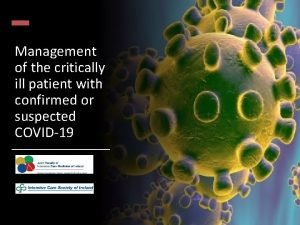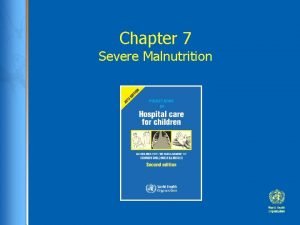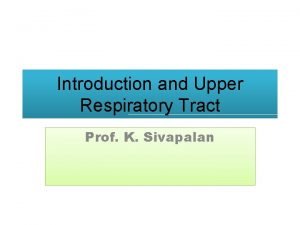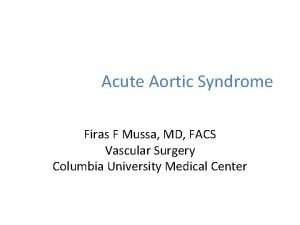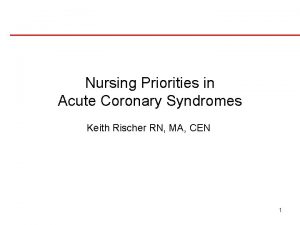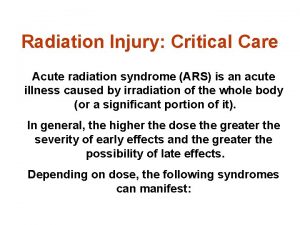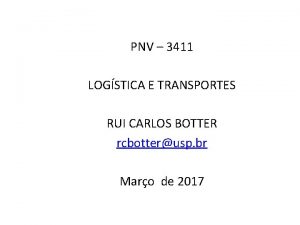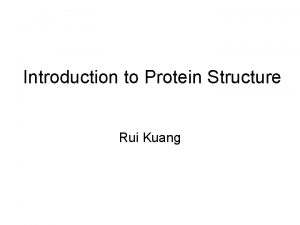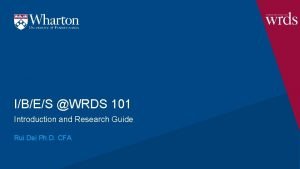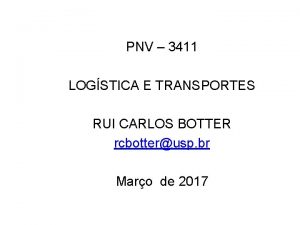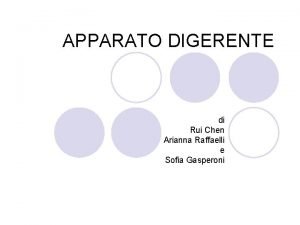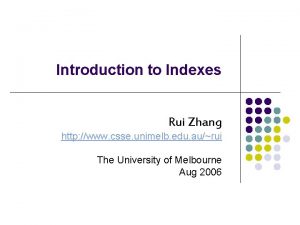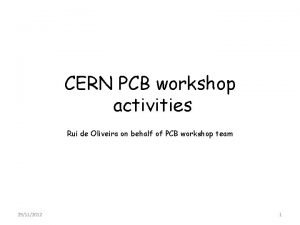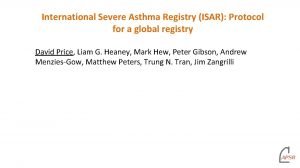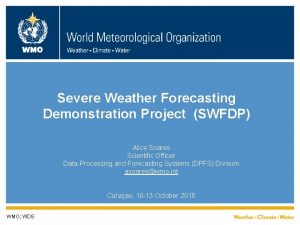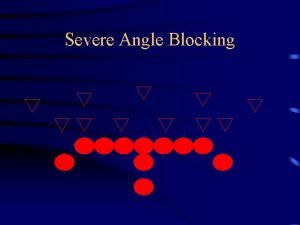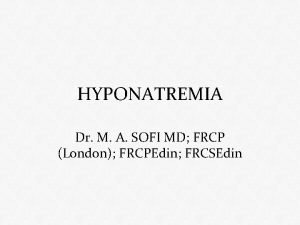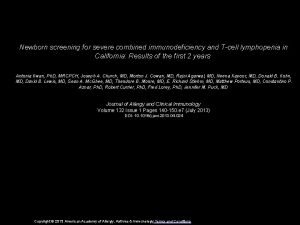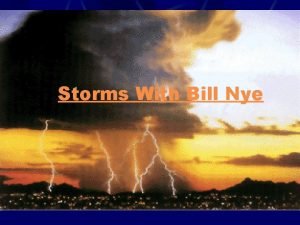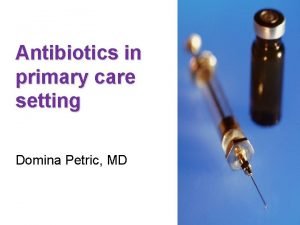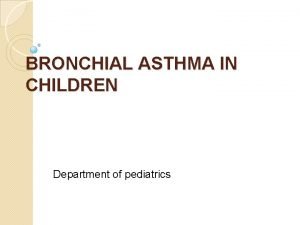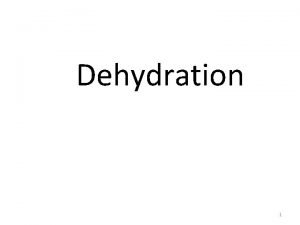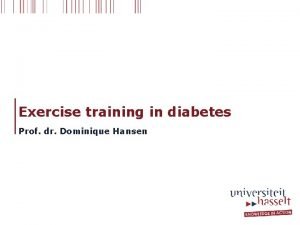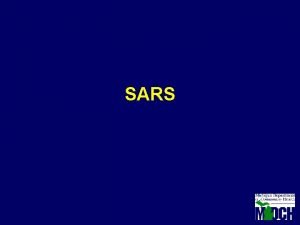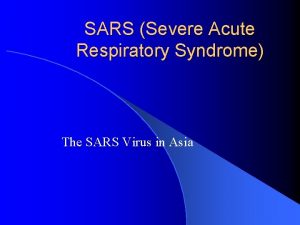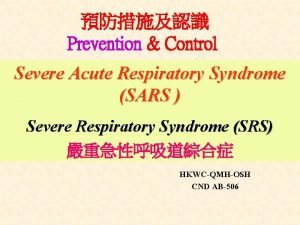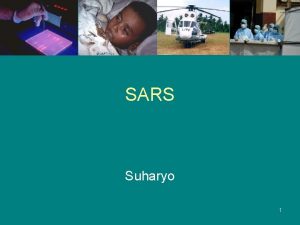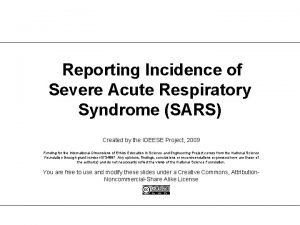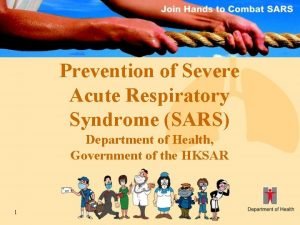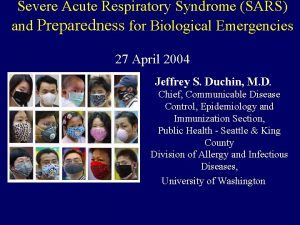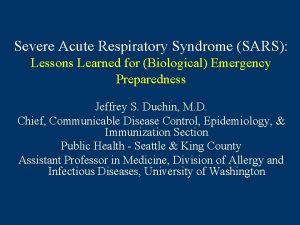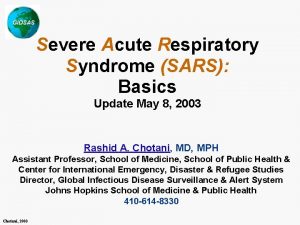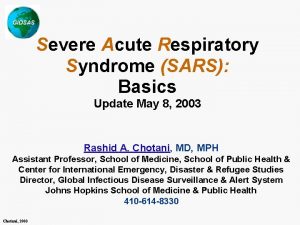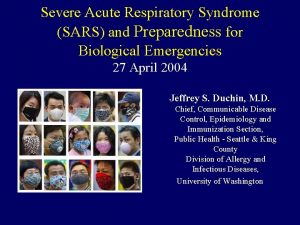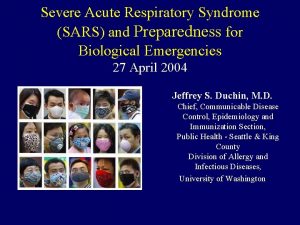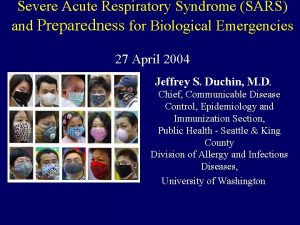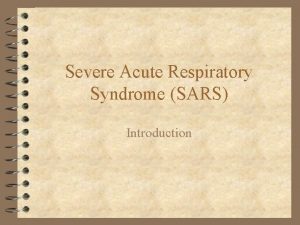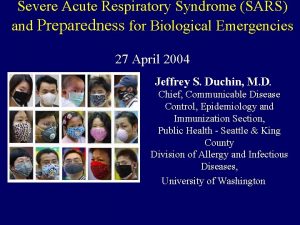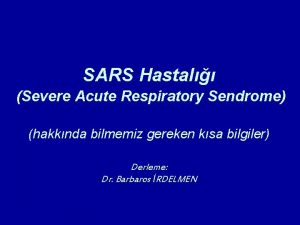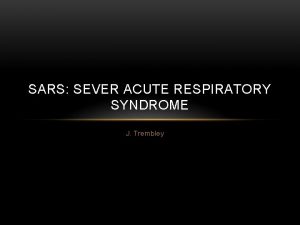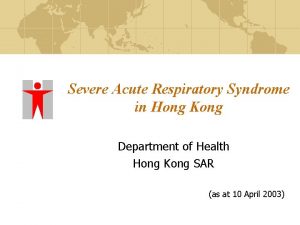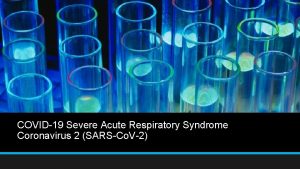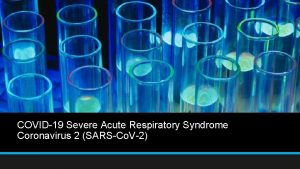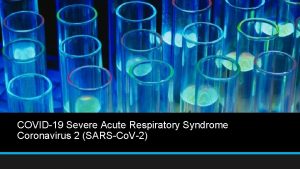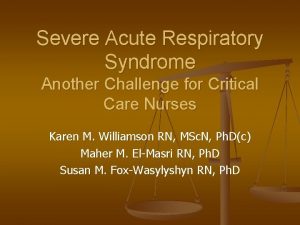Severe Acute Respiratory Syndrome SARS Lydia Ho Rui



































- Slides: 35

Severe Acute Respiratory Syndrome (SARS) Lydia Ho & Rui Yang BISC 209 Professor Mary Allen

November 16, 02 Initial cases of SARS appeared in South China February 14, 03 305 cases & 5 deaths from an unknown acute respiratory syndrome

March 03: New reports of outbreaks came in from Hong Kong, Singapore & Vietnam New syndrome was designated as “severe acute respiratory syndrome, ” or SARS

March 12, 03: WHO issued global alert about SARS March 17, 03: WHO called for global collaborative research on SARS

March 24, 03: Scientists in CDC and HK announced isolation of new coronavirus from SARS patients DNA sequencing shows this virus is distinct from all known human pathogens

April 20 -25, 03: Outbreaks in Hanoi, Hong Kong, China, Singapore & Toronto showed signs of peaking City closed down schools & imposes strict quarantine measures April 25, 03: Nearly 3000 SARS cases have been identified in China


By the end of June, 03: Most countries were removed from the list of areas with recent local transmission of SARS: Singapore, Hong Kong, Beijing , Toronto , Taiwan But the investigation continues…

The Pathogen behind it all… SARS-Co. V Virus

Discovery of the new virus n Kochs postulates n n Discovery of novel coronavirus in patient Isolation of cell culture Reproducible symptom in cell culture Identical isolates produced Novel coronavirus is the cause of SARS

Coronaviridae n n n A family of large, enveloped, positivesense single stranded RNA virus Irregular shape Characteristic ‘clubshaped’ surface projections (~20 nm)

SARS-Co. V Genome n n 71% of the genome codes for polyproteins Remainder: codes for structural proteins n n S (spike): receptor binding, cell fusion, major antigen E (envelop): envelop-associated protein M (membrane): transmembrane-budding N (nucleocapsid): genome-associated phosphoprotein

SARS-Co. V Genome

SARS-Co. V Life Cycle n n n S-protein binds to receptor initiation of induced endocytosis Translation of viral RNA polymerase Transcription of (+) RNA into genomic and subgenomic m. RNA in the cytoplasm N protein synthesized from free ribosome S and M protein synthesized in RER Budding from RER as virion, excretion from cell via Golgi


SARS Case Definition

Clinical Symptoms High fever

Clinical History n 10 days before onset of symptoms n Close contact with probable/suspected SARS patients n Live in / travel to area with transmission of SARS

Transmission of SARS

Transmission of SARS-Co. V n n Highly probable: origination is a crossspecies jump from civet cat to human Human-to-human transmission n Direct contact Spread in droplets shed from respiratory secretions Possible fecal transmission

Infectiousness of SARS n Debatable n n n Most patients are moderately infectious Cases of “superspreaders” reported Factors affecting infectiousness are n n n Viral load of the secretion from index patient Aerosol-generation procedures Distance of the index patient

Methods of Diagnosis

Virus Detection n Virus isolation: inoculate suitable cell culture with patient specimens

Antibody Detection When infected by SARS-Co. V antibodies (e. g. Ig. M and Ig. G) are produced / change in level n Enzyme-linked immunosorbent assay (ELISA)

Antibody Detection n Immunofluorescence assay (IFA): n Sample: patient serum n Method: n n n Fix SARS-Co. V-infected cells on microscope’s slide (patient antibodies already bound to viral antigens) Immunofluorescent-labeled 2º antibodies bind to human Ig. G/Ig. M Significance: positive result after 10 days of onset of illness

Clinical Findings n Clinical history & observation n Chest radiography: important role n 70 -80% patients have abnormal chest radiographs al m r o N t S en i t a p ARS

Method of Cure

Immunomodulatory therapy n Corticosteroid n n Very powerful: affect entire body Anti-inflammatory & immunosuppressive effects n Significance: early improvement of fever, better radiographic infiltrates n Controversy: n n ? Effectiveness Adverse side effects

Antiviral Agents n Ribavirin: nucleoside analog n n n Most frequently administered Have antiviral activity against many DNA & RNA viruses Criticism: n n ? Effectiveness Adverse side effects

Antiviral Agents n Protease inhibitor: n n Lopinavir-ritonavir co-formulation: protease inhibitor used to treat HIV infection With ribavirin: block processing of the viral replicase polyprotein prevent RNA replication

Method of Prevention & Control

Principle of Disease Confinement n n Principle: to break the chain of transmission from infected to healthy person 3 -step protocol of disease confinement n n n Case detection Prompt isolation Contract tracing n n Daily health check Voluntary home isolation

Epidemic Containment n n Creation of emergency operating center Institutional support n n n Efficient quarantine measures Legislation International collaboration—WHO n n n Travel alerts and restrictions Coordination for research Agreement of countries on containment protocol

SARS and Beyond… The early management of SARS epidermic may serve as a model for the containment of future epidermics and pandemics

References Cann, A. (January 20, 2004). Severe acute respiratory syndrome (SARS). Retrieved from: http: //www-micro. msb. le. ac. uk/3035/coronaviruses. html Dept. of Communicable Disease Surveillance and Response, WHO. (2003). Consensus document on the epidemiology of severe acute respiratory syndrome (SARS). Kamps, Hoffmann. (October, 2003). SARS Reference. Retrieved from: www. SARSreference. com Shanghai Center for Bioinfomatics Technology. (2004). Life cycle of the SARS virus. Retrieved from: http: //www. scbit. org/english/sars/Life%20 cycle%20 of%20 SARS%20 virus. htm Siddell, S, Wege H. , ter Meulen V. The biology of coronaviruses. J. Gen Virol. 1983; 64 (Pt 4): 761 -776 Thiel, et al. (June 19, 2003). Mechanisms and enzymes involved in SARS coronavirus genome expression, Journal of general virology. Retrieved from: http: //www. socgenmicrobiol. org. uk/JGVDirect/19424 ft. htm Tsang KW, Ho PL, Ooi GC, Yee WK, et al. A Cluster of Cases of Severe Acute Respiratory Syndrome in Hong Kong. N Engl J Med 2003, 348: 1977 -85. http: //SARSReference. com/lit. php? id=12671062 World Health Organization. (2004). Case Definition. Retrieved from: www. who. int/csr/sars/casedefinition/en/ World Health Organization. (2004). Diagnostic Tests. Retrieved from www. who. int/csr/sars/diagnostictests/en/
 Sars customs worksheet
Sars customs worksheet Rass
Rass Malnutrition case study
Malnutrition case study Acute upper respiratory infection unspecified คือ
Acute upper respiratory infection unspecified คือ Conducting zone respiratory
Conducting zone respiratory Firas mussa md
Firas mussa md Acute coronary syndrome
Acute coronary syndrome Acute radiation syndrome
Acute radiation syndrome Quản trị rủi ro và khủng hoảng
Quản trị rủi ro và khủng hoảng Rui carlos botter
Rui carlos botter Antiparallel vs parallel beta sheets
Antiparallel vs parallel beta sheets Ibes_rui
Ibes_rui Tenho vergonha de mim rui barbosa
Tenho vergonha de mim rui barbosa Rui carlos botter
Rui carlos botter Arianna rui
Arianna rui Rui zhang unimelb
Rui zhang unimelb Poema de ruy barbosa
Poema de ruy barbosa Rui seabra ferreira junior
Rui seabra ferreira junior Rui
Rui Poskrom dla koni wymiary
Poskrom dla koni wymiary Severe dehydration
Severe dehydration Chapter 20 weather patterns and severe storms
Chapter 20 weather patterns and severe storms International severe asthma registry
International severe asthma registry Swfdp
Swfdp Severe angle blocking
Severe angle blocking Severe weather data inventory
Severe weather data inventory Severe asthma treatment
Severe asthma treatment Severe hyponatremia treatment
Severe hyponatremia treatment Combined immunodeficiency
Combined immunodeficiency Bill nye hurricanes
Bill nye hurricanes Inr check
Inr check Ferritin level iron deficiency anemia
Ferritin level iron deficiency anemia Pef in asthma
Pef in asthma Najredšie osídlené oblasti afriky
Najredšie osídlené oblasti afriky Types of dehydration
Types of dehydration Severe obesity
Severe obesity

